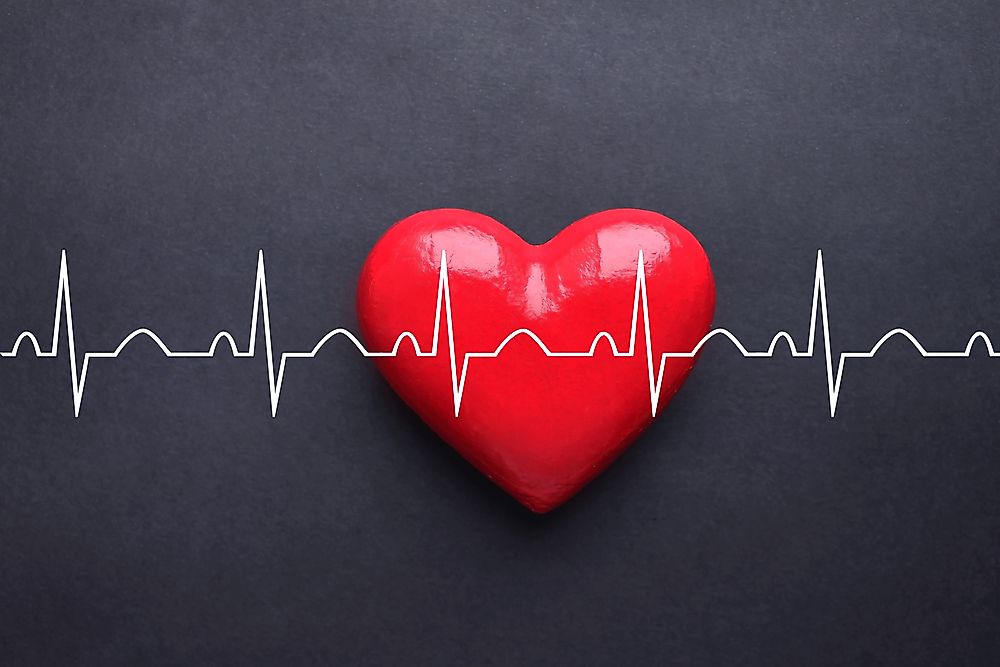What is Tachycardia?

A fast resting heart rate of 100 beats or more per second in adults is referred to as tachycardia. Heart rates that are faster than the resting rate can be normal in some cases, such as during exercise. An abnormal heart rate can occur when there are electrical problems within the heart.
An excessive heart beat can lead to insufficient blood flow to the rest of the body because the heart does not work efficiently in that state. The increased heart beat increases the work load of the heart which in turn leads to an increase in oxygen demand.
Causes of Tachycardia
There are many causes of tachicardia including: hypoglycemia, caffeine, alcohol, atrial flutter, amphetamine, anemia, antiarrhythmic agents, exercise, anxiety, cocaine, atrial fibrillation, atrial tachycardia, AV nodal reentrant tachycardia, fear, fever, brugada syndrome, and hypovolemia, among many others.
Types of Tachycardia
The process of measuring the electrical activity of the heart is called electrocardiography (ECG). An electrocardiogram is used to classify tachycardia into either narrow or wide complex. Deciding on whether the tachycardia is wide or narrow is based on the width of the graphical deflection (QRS Complex) as seen on the ECG. Narrow tachycardia, also known as supraventricular tachycardia, originates in the atria, while wide tachycardia comes from the ventricles.
Sinus Tachycardia
The body is built with mechanisms that maintain blood pressure levels in the body. When the pressure lowers, the heart beats faster to raise the blood pressure (reflex tachycardia). This reaction happens when the blood volume reduces, or when there is an unexpected change in blood flow. Conditions like fever, hyperventilation, and diarrhea that increase metabolic demands can also cause tachycardia. When an increase in the stimulation of the sympathetic nervous system occurs, the heart rate picks up. The increased stimulation occurs due to stress both physical and psychological. Stimulants can also be ephedrine, amphetamines, or cocaine.
Ventricular Tachycardia
This is brought about by abnormal electrical signals in the ventricles which lead to an increased rate. The speed leads to low blood supply since the ventricles do not fill and contract well. Ventricular tachycardia, treated as a medical emergency, is a wide complex tachycardia with a heart rate of 120-250 beats per minute.
Supraventricular tachycardia
This is an accelerated heartbeat originating from above the ventricles. The condition lasts from several minutes to hours. This kind of tachycardia is congenital.
Atrial Fibrillation
Atrial fibrillation occurs when electrical activity originates from the left atrium and not the sinus. This condition causes the chambers to contract at a high irregular rate. It is the most common tachycardia classified as narrow complex. It can be classified as wide tachycardia in cases where the rate is too high. A rate of more than 150 per minute makes it hard to determine the rhythms regularity.
Symptoms of Tachycardia
While some patients of tachycardia do not exhibit any symptoms at all, others show the following signs: accelerated heart rate, chest pain (angina), confusion, dizziness, hypotension, lightheadedness, palpitations, panting, sudden weakness, and syncope.
Management of the Condition
How this condition is handled depends on the type of tachycardia, whether it is wide or narrow, whether the patient is stable or unstable, and whether the lack of stability is caused by the tachycardia. When a patient is unstable, it means that important organ functions are not being executed and cardiac arrest could occur. Unstable patients with narrow complex tachycardia are taken through intravenous adenosine. In all the other cases cardioversion is attempted.











